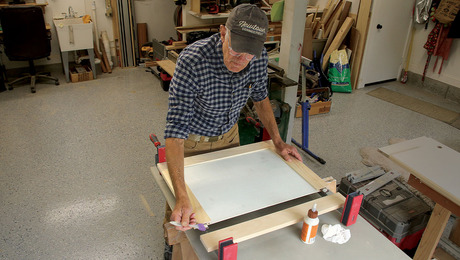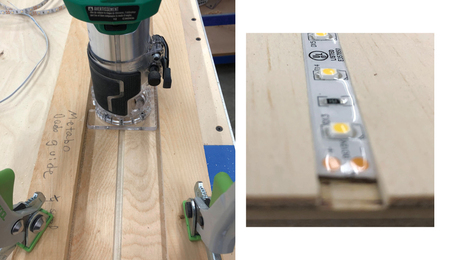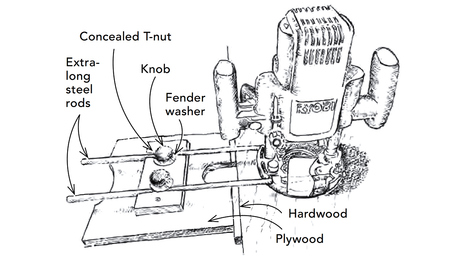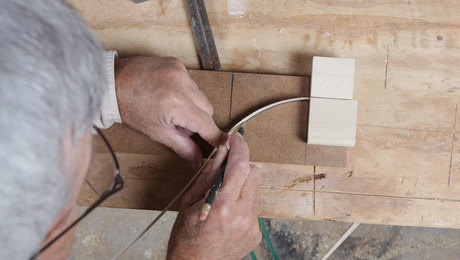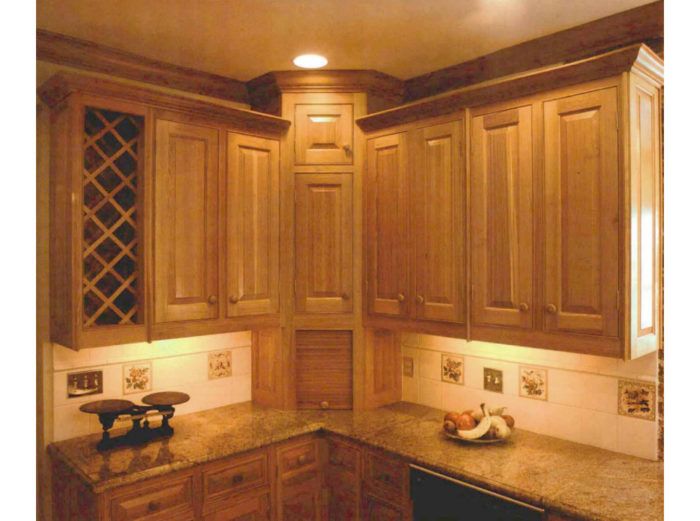
Synopsis: Working with salvaged heart pine is satisfying, but it also presents some challenges. The author talks about the techniques he developed as he made new kitchen cabinets. He offers tips on using a router and biscuit joiner in making face frames and doors.
A fellow I worked with in Vermont some years ago was a third-generation carpenter. “Brad,” his grandfather once said to him, “we weren’t any better carpenters than you. We just got all the good wood.” Almost ten years after Brad told me that story, the words are even more true. Good wood is getting scarce. It was a welcome opportunity, then, when I had my first chance to work with wood of grandfather’s day.
My client and I had been discussing the merits of various woods for his kitchen cabinets. He was pushing for pine, which I said was too soft. When I asked what color he wanted, he pointed to a small table and said, “Pumpkin pine.” “Oh, that’s different,” I said. “That’s heart pine.”
Many salvaged-wood dealers carry heart pine
Longleaf pine, also called heart pine, is one of 11 species of southern yellow pine. The recycled wood available now was harvested from frames and floors of buildings built in the past century. The trees from which this wood came grew slowly, in part because of the competitive nature of virgin forests. Mature trees often were up to 300 years old. In the wood I purchased for this kitchen, it was not hard to find over 30 growth rings to the inch. Longleaf pine still is found in forests in the Southeast, but most old-growth trees were cut in the 1700s and 1800s.
Heart pine is far denser than any other cabinet grade pine and is available in several grades, from knotty to perfectly clear. Because it’s from dense, old-growth stock, the wood used for these cabinets should be more stable and more likely to wear well. Its durability is enhanced by the way it was milled. Most of the recycled timbers were quarter sawn, which results in a greater percentage of boards with vertical grain.
Antique heart pine’s working characteristics include stability, high density or hardness (for a softwood), high resin content and a tendency for brittleness. It’s a great source of splinters.
When I purchase wood for cabinets or for furniture, I usually make it a point to select boards by hand. In this case, I ordered the wood sight unseen from Mountain Lumber (Ruckersville, Va.). The supplier had assured me of the wood’s quality. At nearly $8 per board foot, I expected the wood to be good, and I wasn’t disappointed.
Easy to cut, harder to shape
I had little difficulty cutting or planning heart pine. I received the stock in rough form and ran it through a planer with little tearout. The boards were so straight hardly any truing was required prior to ripping, and I used the joiner hardly at all. I have a high-quality Forrest combination blade (Forrest Manufacturing Co., Clifton, N.J.) on my table saw with a stabilizer, a flat metal disk installed alongside the blade to reduce vibration. This combination produced cuts ready for glue up.
For more photos and details, click the View PDF button below:













